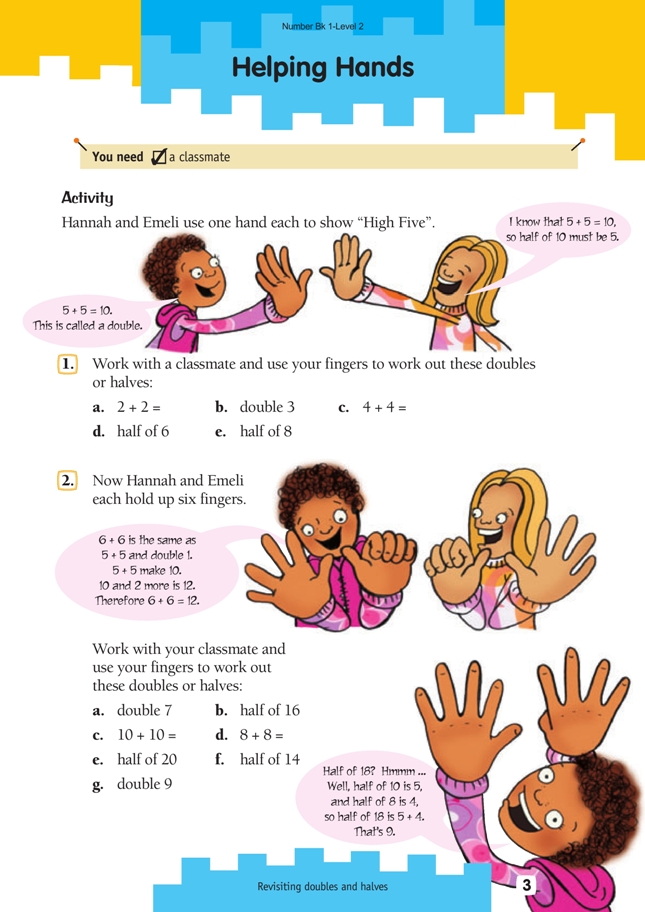This is a level 2 number activity from the Figure It Out series. It relates to Stage 5 of the Number Framework.
A PDF of the student activity is included.
Click on the image to enlarge it. Click again to close. Download PDF (232 KB)
know doubles and halves up to 20
classmate
Doubles such as 5 + 5 and 3 + 3 are some of the basic facts that students find easiest to commit to memory. Presenting doubles and halves alongside one another will help the students to understand that halving is the inverse of doubling. A secure knowledge of doubles gives students a good foundation for learning the multiplication basic facts.
The example given at question 2 uses double 5 and double 1 for one way of thinking about double 6. This understanding is most easily developed using finger patterns; students working at level 2 should have had learning experiences that allow them to automatically make the pattern for 6 without having to count on their fingers. They should know that 6 can be made up of 5 and one more.
Students at this level will be developing recall of their doubles and halves to 20, so some may not need to use this five-based strategy.
You could make explicit for the students the connection between doubles and skip-counting in twos as well as using this opportunity to explain that an even number can be halved with no (whole number) remainders.
As an extension, you could ask the students:
“Could you play this game by yourself using a mirror? How?”
“What would happen to the answers to the doubles problems in question 2 if you and your classmate used a mirror?” (They would, of course, double again.)
Answers to Activity
1. a. 4
b. 6
c. 8
d. 3
e. 4
2. a. 14
b. 8
c. 20
d. 16
e. 10
f. 7
g. 18
